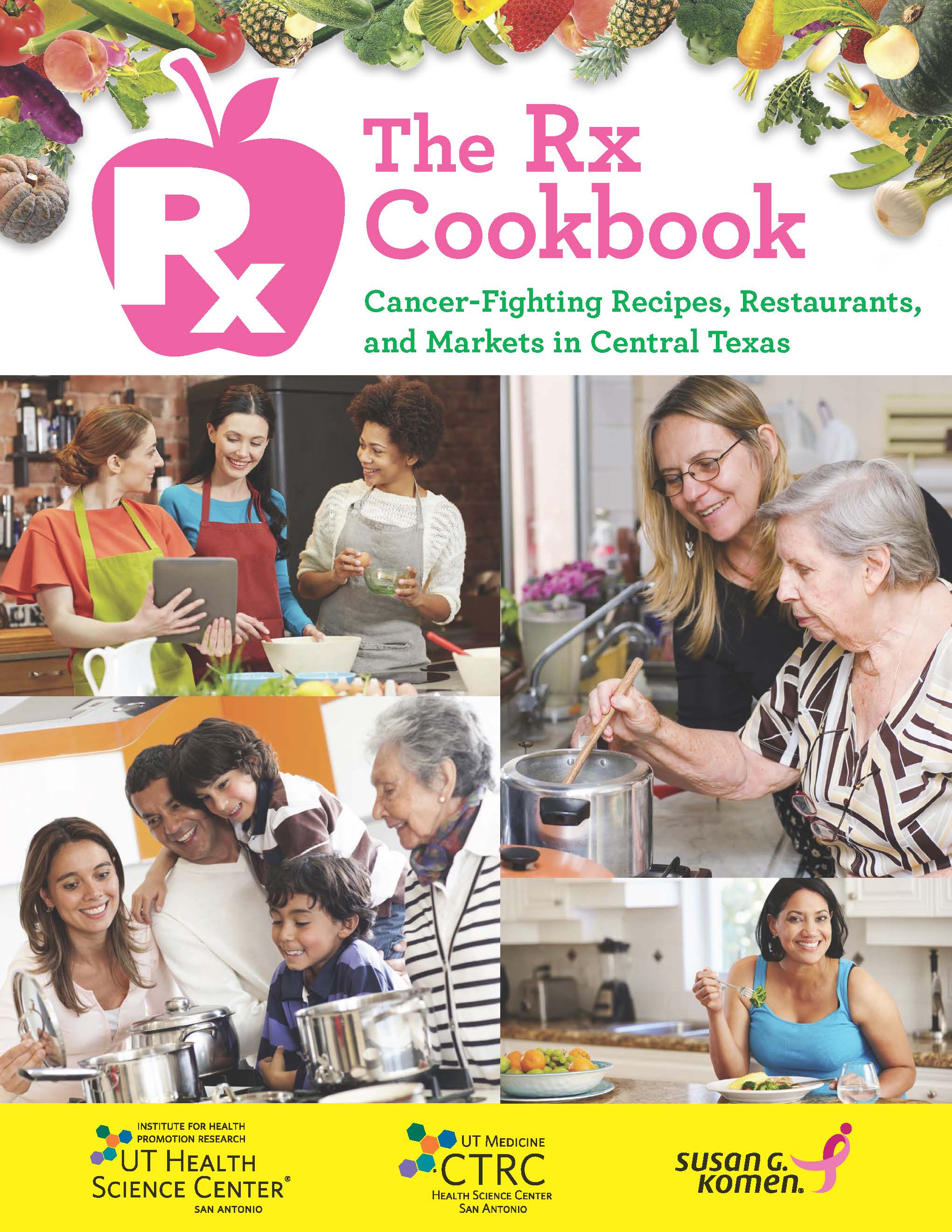
Share On Social!
The food you eat influences your cancer risk.
The new Rx Cookbook: Cancer-Fighting Recipes, Restaurants & Markets aims to help people reduce their cancer risk with recipes based on an anti-inflammatory diet, developed by a chef and researchers at the University of Texas Health Science Center at San Antonio.
 Inflammation is the process your body uses to protect itself in response to infection or injury, adding nourishment or immune activity.
Inflammation is the process your body uses to protect itself in response to infection or injury, adding nourishment or immune activity.
When inflammation is chronic or unresolved, it can increase cancer risk.
The Rx for Better Breast Health study, led by Drs. Amelie G. Ramirez, Michael Wargovich, and Rong Li, gave local breast cancer survivors cooking classes, counseling, and biomarker assessments to test the effects of an anti-inflammatory diet on preventing cancer recurrence. Preliminary results show dietary benefits. Final results are in analysis.
For the Rx Cookbook, the team worked with a local chef and study participants to create recipes with ginger, turmeric, garlic, and other anti-inflammatory ingredients.
The cookbook also lists local restaurants and stores with anti-inflammatory items.
“We strongly feel that a daily diet rich in anti-inflammatory foods may help prevent cancer and its recurrence, and this cookbook is a great way for people to get started with anti-inflammatory recipes,” said Dr. Ramirez, who leads SaludToday and directs the Institute for Health Promotion Research at the Health Science Center.
Rx Cookbook recipes were submitted by local breast cancer survivors.

Executive Chef Iverson Brownell, a chef at Café Dijon in San Antonio who creates healthy recipes, used anti-inflammatory ingredients to tweak the women’s recipes.
“We hope people can use this cookbook to help reverse the imbalance in our diets and prevent inflammatory disease,” Ramirez said. “Together we can take the American diet a step in the right direction and blaze a new path toward a culture of health for all.”
The Rx for Better Breast Health study was funded by Susan G. Komen.
Explore More:
Healthy FoodBy The Numbers
1
Supermarket
for every Latino neighborhood, compared to 3 for every non-Latino neighborhood



